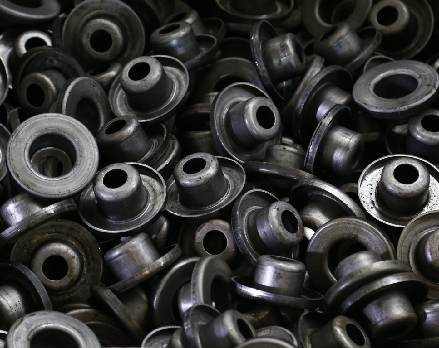 Afrikaans
Afrikaans  Albanian
Albanian  Amharic
Amharic  Arabic
Arabic  Armenian
Armenian  Azerbaijani
Azerbaijani  Basque
Basque  Belarusian
Belarusian  Bengali
Bengali  Bosnian
Bosnian  Bulgarian
Bulgarian  Catalan
Catalan  Cebuano
Cebuano  Corsican
Corsican  Croatian
Croatian  Czech
Czech  Danish
Danish  Dutch
Dutch  English
English  Esperanto
Esperanto  Estonian
Estonian  Finnish
Finnish  French
French  Frisian
Frisian  Galician
Galician  Georgian
Georgian  German
German  Greek
Greek  Gujarati
Gujarati  Haitian Creole
Haitian Creole  hausa
hausa  hawaiian
hawaiian  Hebrew
Hebrew  Hindi
Hindi  Miao
Miao  Hungarian
Hungarian  Icelandic
Icelandic  igbo
igbo  Indonesian
Indonesian  irish
irish  Italian
Italian  Japanese
Japanese  Javanese
Javanese  Kannada
Kannada  kazakh
kazakh  Khmer
Khmer  Rwandese
Rwandese  Korean
Korean  Kurdish
Kurdish  Kyrgyz
Kyrgyz  Lao
Lao  Latin
Latin  Latvian
Latvian  Lithuanian
Lithuanian  Luxembourgish
Luxembourgish  Macedonian
Macedonian  Malgashi
Malgashi  Malay
Malay  Malayalam
Malayalam  Maltese
Maltese  Maori
Maori  Marathi
Marathi  Mongolian
Mongolian  Myanmar
Myanmar  Nepali
Nepali  Norwegian
Norwegian  Norwegian
Norwegian  Occitan
Occitan  Pashto
Pashto  Persian
Persian  Polish
Polish  Portuguese
Portuguese  Punjabi
Punjabi  Romanian
Romanian  Russian
Russian  Samoan
Samoan  Scottish Gaelic
Scottish Gaelic  Serbian
Serbian  Sesotho
Sesotho  Shona
Shona  Sindhi
Sindhi  Sinhala
Sinhala  Slovak
Slovak  Slovenian
Slovenian  Somali
Somali  Spanish
Spanish  Sundanese
Sundanese  Swahili
Swahili  Swedish
Swedish  Tagalog
Tagalog  Tajik
Tajik  Tamil
Tamil  Tatar
Tatar  Telugu
Telugu  Thai
Thai  Turkish
Turkish  Turkmen
Turkmen  Ukrainian
Ukrainian  Urdu
Urdu  Uighur
Uighur  Uzbek
Uzbek  Vietnamese
Vietnamese  Welsh
Welsh  Bantu
Bantu  Yiddish
Yiddish  Yoruba
Yoruba  Zulu
Zulu conveyor belt roller types
Understanding the Different Types of Conveyor Belt Rollers
Conveyor belt systems are integral to many industries, facilitating material handling and transportation. A critical component of these systems is the conveyor belt roller, which plays a vital role in ensuring efficient operation and longevity of the conveyor. In this article, we will explore the various types of conveyor belt rollers, their functions, and how they can impact the performance of a conveyor system.
1. Idler Rollers
Idler rollers are essential components that support the weight of the conveyor belt and the materials being transported. They are typically installed along the conveyor's return path and are crucial for reducing friction between the belt and the conveyor structure. There are several types of idler rollers, including
- Standard Idler Rollers These are designed for general applications and come in various diameters and widths to accommodate different belt sizes. - Impact Idler Rollers Specifically designed to absorb the shock loads that occur when materials are loaded onto the conveyor, often at transfer points. These rollers have rubber liners that cushion the impact.
- Training Idler Rollers Used to maintain the alignment of the conveyor belt and ensure that it tracks properly. Training idlers help prevent belt misalignment, which can lead to wear and potential damage.
2. Drive Rollers
Drive rollers are crucial for the movement of the conveyor belt. They are typically powered by an electric motor and are responsible for driving the belt forward. The effectiveness of the drive roller directly influences the speed and efficiency of material handling on the conveyor. Different configurations of drive rollers include
- Smooth Drive Rollers Most commonly used for light to medium-duty applications where the material being transported does not require high friction for movement.
- Lagged Drive Rollers These feature a textured surface that increases friction, making them ideal for heavy-duty applications. The lagging can be made of rubber or other high-friction materials to improve grip.
3. Return Rollers
Return rollers are positioned on the return side of the conveyor belt, aiding in the belt's return journey after it has discharged its cargo. Unlike idler rollers, return rollers often do not support weight but help maintain the belt’s path. They come in various designs, including
- Flat Return Rollers These simple rollers prevent the belt from sagging too much and help maintain its tension.
conveyor belt roller types

- Crowned Return Rollers Designed with a slight curvature, these rollers help in self-centering the belt to ensure it remains aligned during its return journey
.4. Specialty Rollers
In addition to the standard types, various specialty rollers cater to specific applications and environments
- Rubber-Coated Rollers These are ideal for applications requiring high friction, particularly in inclined conveyor systems where load stability is crucial.
- Stainless Steel Rollers Used in industries such as food processing and pharmaceuticals where hygiene is paramount. Stainless steel rollers resist corrosion and are easier to clean.
- Return Roller with Spiral Design Helps in capturing and redistributing any spillage, particularly useful in bulk material handling.
5. Considerations for Selecting Rollers
When selecting conveyor belt rollers, several factors should be taken into account
- Load Capacity Understanding the weight and size of the materials being transported is essential for selecting the right roller type and size.
- Environment Harsh conditions such as extreme temperatures, humidity, or corrosive substances may require specialized rollers to maintain functionality and durability.
- Belt Type The design and material of the conveyor belt will also impact roller selection to ensure compatibility and optimal performance.
In conclusion, understanding the various types of conveyor belt rollers is crucial for designing efficient conveyor systems tailored to specific material handling needs. By selecting the right combination of rollers, industries can enhance the efficiency, longevity, and reliability of their conveyor operations, ultimately leading to improved productivity and reduced operational costs.
-
Revolutionizing Conveyor Reliability with Advanced Rubber Lagging PulleysNewsJul.22,2025
-
Powering Precision and Durability with Expert Manufacturers of Conveyor ComponentsNewsJul.22,2025
-
Optimizing Conveyor Systems with Advanced Conveyor AccessoriesNewsJul.22,2025
-
Maximize Conveyor Efficiency with Quality Conveyor Idler PulleysNewsJul.22,2025
-
Future-Proof Your Conveyor System with High-Performance Polyurethane RollerNewsJul.22,2025
-
Driving Efficiency Forward with Quality Idlers and RollersNewsJul.22,2025





























